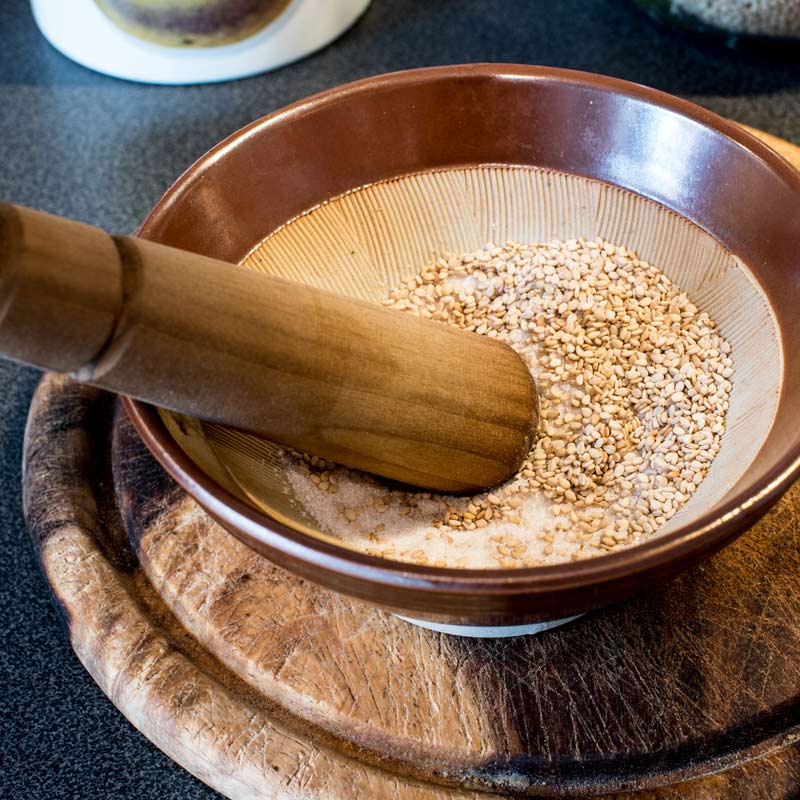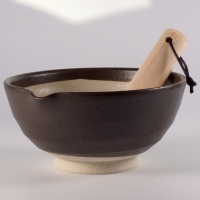What’s the deal with a suribachi? Isn’t it just the same as a pestle and mortar? Well not quite…
The suribachi is a traditional cooking implement used in Japan. The word literally means ‘grinding bowl’ and it’s similar in function and shape to a pestle and mortar. There are, however, some notable differences and many cooks and chefs prefer the Japanese version.
What is it?
A Japanese suribachi is a ceramic bowl with ridges in the clay to make a grinding surface on the inside. It is similar to a stone pestle and mortar but with a more textured, ridged surface. To use it correctly, you need a surikogi, equivalent to the pestle, which is made of wood. Generally, because of the rough surface inside the bowl, less effort is needed to grind things like seeds and herbs.
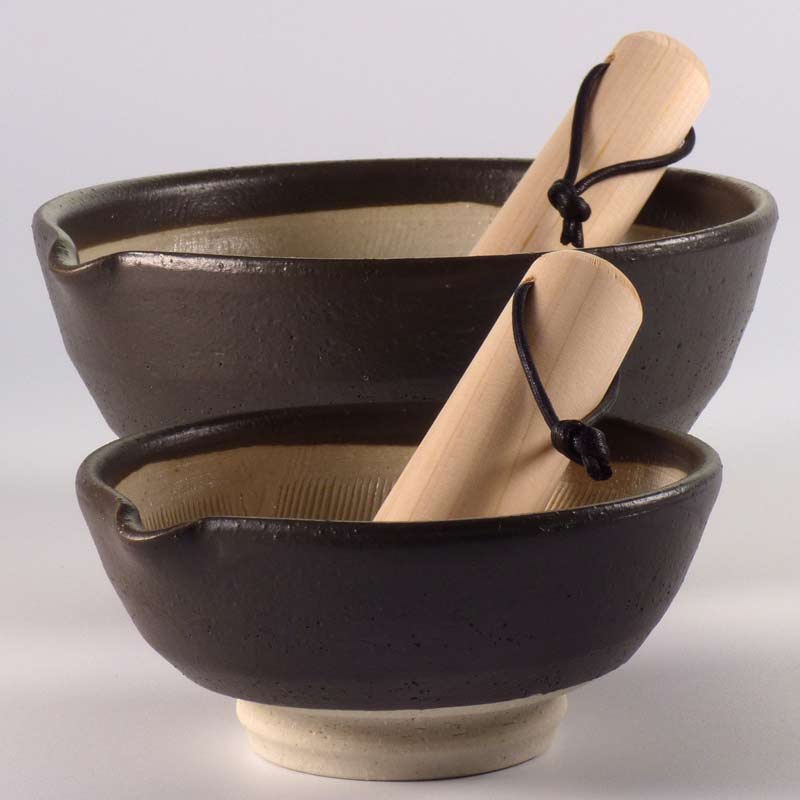
Many suribachi bowls are glazed on the outside with the inner surface being unglazed. The comb-patterned ridges are not just randomly applied but form a clever design that actually helps the grinding process by trapping small grains and seeds, keeping them in the bowl ready to be pulverized rather than slipping around or even jumping out of the bowl.
As you would expect, suribachi come in a variety of sizes. A large one may be good for preparing any quantity but if you only use small amounts of ingredients then you might find a smaller bowl easier to handle.
History
The suribachi was introduced to Japan from China in the 11th century. Originally it was used for preparing traditional medicine and herbal remedies but eventually it became commonly used for food preparation.
The typical style that we see now of a glazed exterior with an unglazed clay inner surface came from Korean ceramic techniques in the 16th century.
The wooden pestle, or surikogi, was traditionally made from the sansho tree and if you know about sansho pepper seasoning, you can imagine that this added a little flavour the spices being prepared. These days however other woods are more common, including wood from the Japanese cypress tree or tounou hinoki.
What do you use it for?
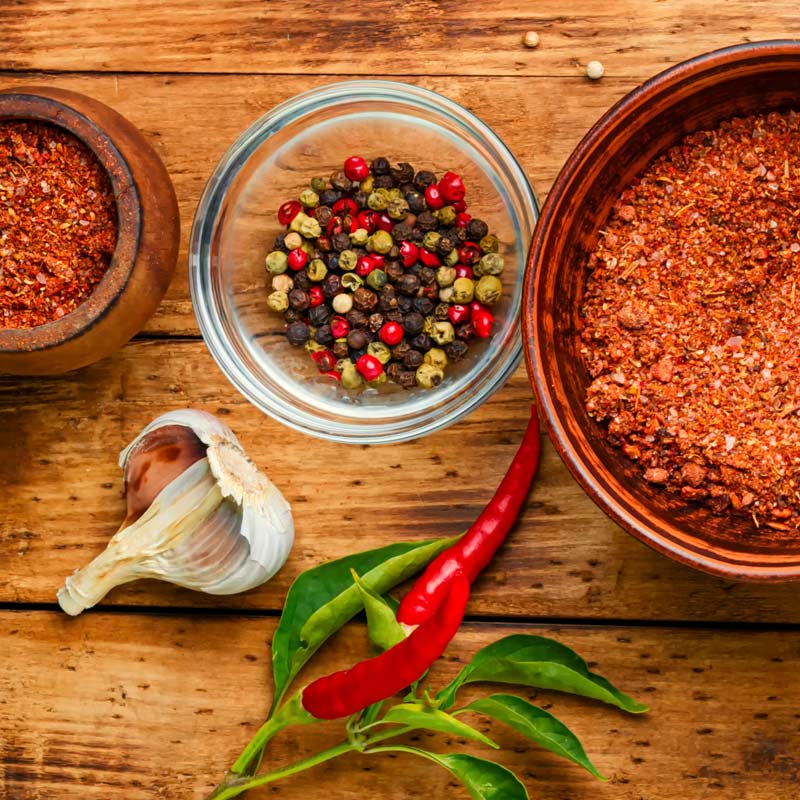
The suribachi and surikogi make great tools for crushing, grinding and breaking down ingredients such as seeds, spices and herbs to extract the flavour and aroma.
In general, a suribachi is great for blending spices and herbs to create unique flavours but one of the most common uses for a suribachi is to grind sesame seeds. Grinding them brings out the oils and helps turn them into a paste.
This is good for making tahini and in Japanese cuisine, toasted sesame seeds are used to make dressing for vegetables and salads and to flavour meat or fish. It’s also used to flavour desserts such as ice cream and cookies.
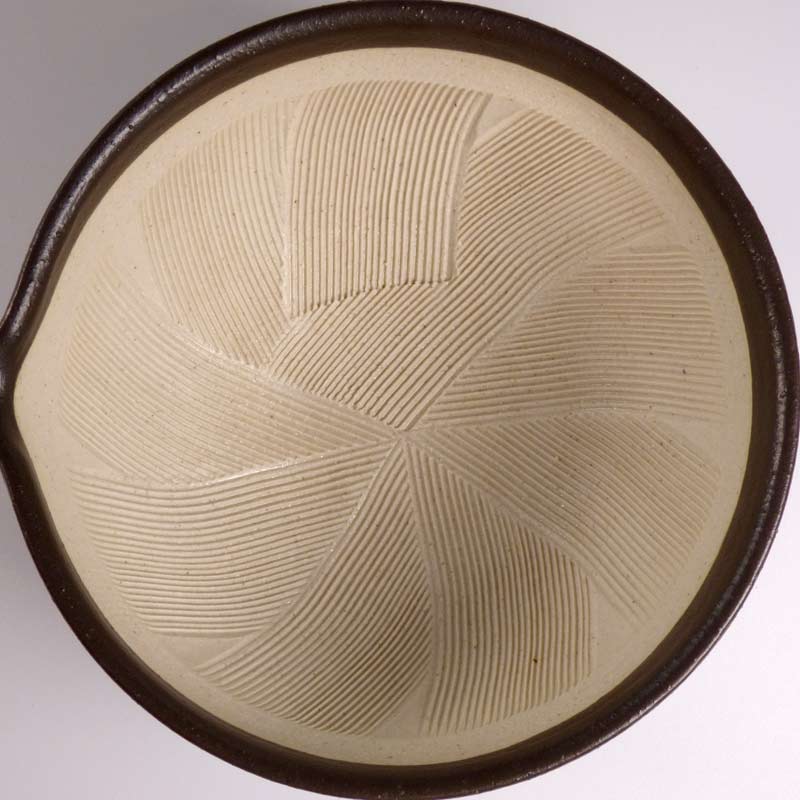
It’s difficult to crush sesame and other small smooth seeds in a normal mortar bowl since they slip around and are easy to lose over the side. The ridges in a suribachi are perfect for this though and the shiny seeds are easy to press and get ‘caught’ by the ridges, releasing their oils and producing a more satisfactory consistency.
But a suribachi is not just for crushing dry ingredients. It’s good for mashing tofu or avocado and for blending a more liquid paste by adding sesame or other flavoured oil
You can even use it to blend together the ingredients for Japanese fish and meat balls. Curry paste, pesto, marinades and rubs are also easy to bring together.
You could also use it to crush garlic, pepper and chillies plus any other ingredient where a ground powder or paste is required.
How to use it
A suribachi and surikogi provide a much easier way to break down more delicate ingredients such as herbs, seeds and spices, naturally releasing their flavours and aromas, in a way that you cannot achieve with a knife or mechanical chopper. Because you are blending by hand, you can use your senses to judge when you have the right consistency and flavour.
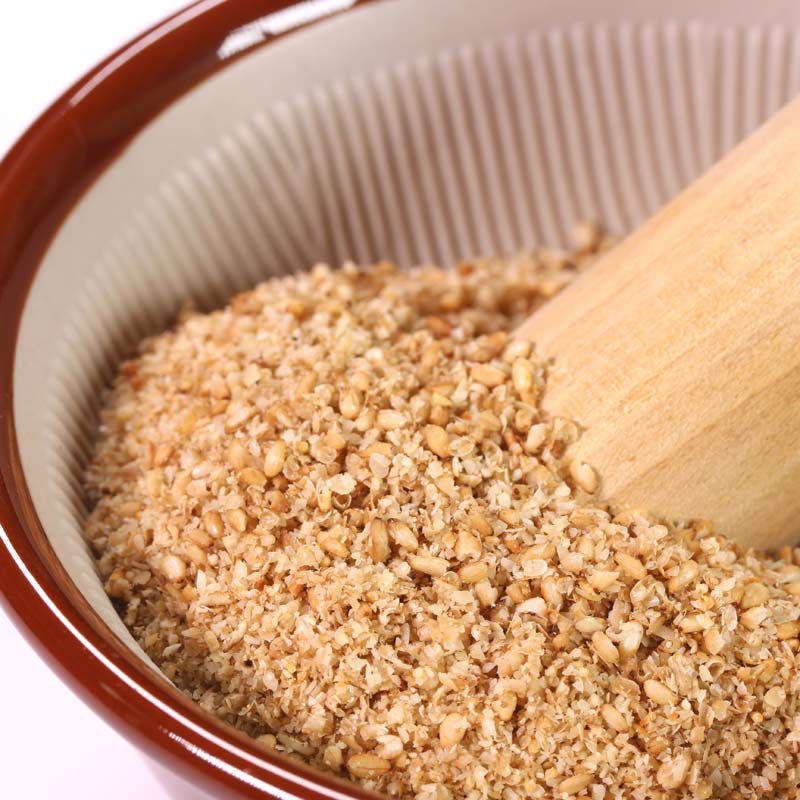
The best way to use it is to place the suribachi bowl on a flat surface, you might want to place a damp cloth or tenugui underneath to stop it slipping around. Gently use the wooden surikogi to crush the seeds or other ingredients to the desired texture against the rough raised surface of the bowl.
You shouldn’t need too much pressure and rather than pounding the food, rub the ingredients in a circular motion over the surface grooves.
Using the wooden pestle means you won’t put too much pressure on the ridges and cause the bowl or the pestle to become worn.
When it comes to cleaning the bowl after use, it’s best to avoid scrubbing it as you may damage the clay ridges inside. Instead you can soak it in warm water with a mild detergent for 10 or 20 minutes and then rinse it well under running water. If you do need to scrub, then do it gently along the grain of the ridges.
In summary then, a suribachi is an unusual but useful addition to your kitchen especially if you like to prepare flavoursome and exotic meals. It's surprisingly versatile and easy to use so why not give it a try!


